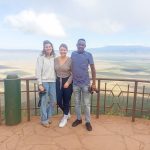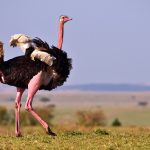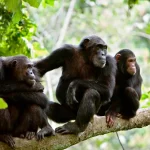
- Altitude Training for Mount Kilimanjaro Trekking
-
Written by : Tarimo Expeditions
Altitude Training for Mount Kilimanjaro Trekking: Everything You Need to Know
Are you planning to trek Mount Kilimanjaro? Do you know that altitude sickness is one of the biggest challenges of this adventure? Altitude training can help you prepare your body for high altitude and increase your chances of success. In this article, we will discuss everything you need to know about altitude training for Mount Kilimanjaro trekking.
Mount Kilimanjaro is the highest peak in Africa and one of the most challenging treks in the world. With its height of 5,895 meters, it poses a significant risk of altitude sickness, which can be fatal if not treated properly. Altitude training is a process that can help your body adjust to the high altitude and reduce the risk of altitude sickness.
What is Altitude Training?
Altitude training is a process of acclimatizing your body to high altitude by exposing it to lower oxygen levels. It involves a range of exercises and techniques designed to simulate high altitude conditions, allowing your body to adapt to the lower oxygen levels gradually. This process can help you increase your endurance, improve your respiratory system, and reduce the risk of altitude sickness.
How Does Altitude Training Work?
When you trek at a high altitude, the air pressure and oxygen levels decrease, making it difficult for your body to function properly. Altitude training works by exposing your body to lower oxygen levels, which stimulates your body to produce more red blood cells. This process, called erythropoiesis, increases the oxygen-carrying capacity of your blood, improving your endurance and performance at high altitudes.
Benefits of Altitude Training for Mount Kilimanjaro Trekking
Altitude training provides several benefits for Mount Kilimanjaro trekking, including:
- The improved oxygen-carrying capacity of the blood
- Increased endurance and stamina
- Improved respiratory function
- Reduced risk of altitude sickness
- Faster recovery after high-altitude treks
How to Prepare for Altitude Training for Mount Kilimanjaro Trekking?
Before starting altitude training for Mount Kilimanjaro trekking, it is essential to prepare your body by following these steps:
Consult with a doctor: Before starting any altitude training program, it is recommended to consult with a doctor to determine if you are physically fit to do so.
Start with low-intensity exercises: Start with low-intensity exercises such as walking, jogging, or cycling to improve your cardiovascular fitness.
Increase intensity gradually: Increase the intensity of your workouts gradually to allow your body to adapt to the lower oxygen levels.
Stay hydrated: Drink plenty of water and fluids to prevent dehydration, which can worsen altitude sickness.
Get adequate rest: Get enough rest and sleep to allow your body to recover and adapt to the altitude.
Follow a healthy diet: Follow a healthy diet rich in carbohydrates, proteins, and vitamins to provide your body with the necessary nutrients for altitude training.
FAQs
Q. What is altitude sickness?
A. Altitude sickness is a condition that occurs when your body is exposed to high altitude and cannot get enough oxygen. Symptoms include headache, dizziness, nausea, fatigue, and shortness of breath.
Q. How long does it take to acclimatize to high altitude?
A. It can take up to 10 days to acclimatize to high altitude, depending on the altitude and individual factors such as age, fitness level, and previous altitude exposure.
Q. Is altitude training safe?
A. Altitude training is generally safe if done under the supervision of a qualified trainer and with proper precautions such as staying hydrated and monitoring symptoms of altitude sickness.
Altitude training is an essential part of preparing for Mount Kilimanjaro trekking. By exposing your body to lower oxygen levels, altitude training can help you adapt to high altitude and reduce the risk of altitude sickness. Whether you choose hypoxic training, high-altitude training camps, or altitude chambers, it is crucial to prepare your body adequately and follow proper safety precautions. With the right preparation and training, you can increase your chances of a successful climb and enjoy the breathtaking views from the summit of Mount Kilimanjaro.
Best of Our Tanzania Safaris
From the Wildebeest Migration to the Big 5 and Tropical White Sand Beaches
Explore the best of Tanzania with our curated collection of safaris packages. Experience breathtaking wildlife, stunning landscapes and cultural richness, there’s something for everyone.



